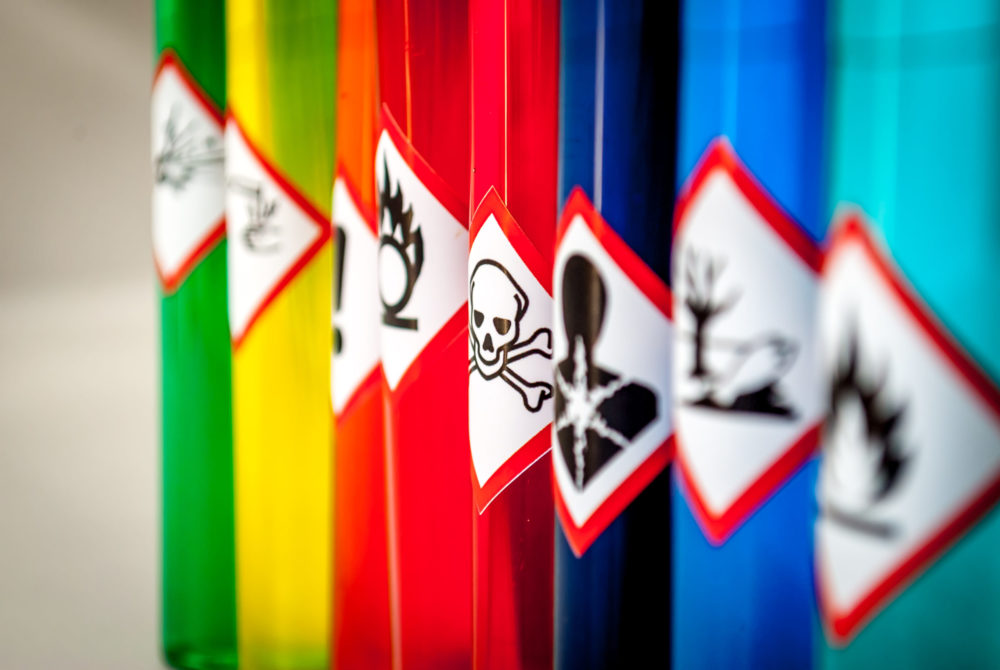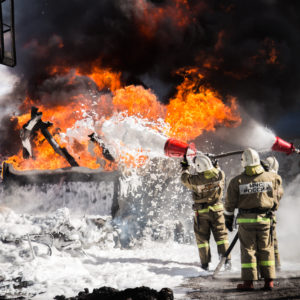EPA Proposes New Rules to Expand Authority to Combat PFAS Contamination
The proposed rules would grant the EPA more power to treat PFAS chemicals as hazardous substances, allowing the agency to enforce corrective actions to address water contamination and other problems.

Federal environmental regulators have proposed new regulations which would increase their authority to regulate per- and polyfluoroalkyl substances (PFAS), which have polluted numerous water supplies nationwide, and pose a serious health risk in communities nationwide, especially near chemical manufacturing plans, military bases, airports and other training locations where firefighting foam containing the chemicals were regularly released into the environment.
The U.S. Environmental Protection Agency (EPA) published two new proposed rules in the Federal Register on February 8. Both rules would strengthen the agency’s ability to take corrective actions to protect human health and the environment from PFAS contamination.
PFAS Contamination Risks
PFAS include a group of over 9,000 man-made substances that have been widely used for decades, to resist grease, oil and water. However, there is now growing evidence that exposure to the chemicals may cause various cancers, liver damage, thyroid disease, decreased fertility, high cholesterol, obesity, hormone suppression, and other injuries.
While most of the attention on the chemicals in recent years has focused on the use in aqueous film-forming foam (AFFF), which is used to fight fuel-based fires and has resulted in toxic exposures for firefighters and widespread water contamination in communities nationwide, PFAS are also found in a number of consumer products, including food containers, bottles and wrappers.
3M Company, DuPont, Chemguard, Inc., Tyco Fire Products and other manufacturers of chemicals and fire safety products currently face thousands of PFAS water contamination lawsuits, including claims brought by local water providers left with costs associated with cleaning up the toxic chemicals, as well as injury lawsuits seeking financial compensation for firefighters and other individuals diagnosed with certain types of cancer after regular exposure to the toxic chemicals.

Learn More About
Exposure to firefighting foam chemicals may result in an increased risk of cancer for firefighters, military and airport personnel.
Learn More About this Lawsuit SEE IF YOU QUALIFY FOR COMPENSATIONEPA Proposed PFAS Contamination Rules
One of the rules, Listing of Specific PFAS as Hazardous Constituents, classifies nine of the chemicals as “hazardous constituents” that require facilities and owners to take actions to protect human health and the environment from releases of those chemicals.
The proposed rule would bring nine PFAS under the authority of the Resource Conservation and Recovery Act (RCRA), including perfluorooctanoic acid (PFOA), perfluorooctanesulfonic acid (PFOS), perfluorobutanesulfonic acid (PFBS), hexafluoropropylene oxide-dimer acid (HFPO–DA or GenX), perfluorononanoic acid (PFNA), perfluorohexanesulfonic acid (PFHxS), perfluorodecanoic acid (PFDA), perfluorohexanoic acid (PFHxA), and perfluorobutanoic acid (PFBA).
“EPA’s criteria for listing substances as hazardous constituents under RCRA require that they have been shown in scientific studies to have toxic, carcinogenic, mutagenic, or teratogenic effects on humans or other life forms,” the proposed rule states. “As a result of this proposed rule, if finalized, when corrective action requirements are imposed at a facility, these PFAS would be among the hazardous constituents expressly identified for consideration in RCRA facility assessments and, where necessary, further investigation and cleanup through the RCRA corrective action process at RCRA treatment, storage, and disposal facilities.”
The other rule, Definition of Hazardous Waste Applicable to Corrective Action for Releases from Solid Waste Management Units, would make it clear that corrective actions for hazardous wastes apply to chemicals not listed as hazardous waste, but also those which exhibit the characteristics of hazardous waste, even if they are not classified as such, including the nine PFAS listed in the other proposed rule.
In practice, this would require owners and operators of facilities that produce and manufacture the chemicals to be responsible for ensuring the chemicals do not endanger human health and the environment, granting the EPA the ability to take corrective actions it previously would have not had the authority to take, due to the chemicals not being specifically listed as hazardous wastes or constituents.
The agency is taking public comments on both rules, with the deadline for comments on the first rule listing PFAS as hazardous constituents due before April 8, 2024. Comments on the second rule are being accepted until March 11, 2024. Information on how to submit comments are available in the Federal Register notices listed above.
PFAS Exposure Lawsuits
The new EPA rules follow a report late last year which found that PFAS water contamination affected at least 44 million Americans. The analysis, published by the Environmental Working Group, used data from tests conducted on water systems nationwide. The prominent environmental advocacy organization determined that at least 854 water systems across the U.S. suffer from PFAS contamination.
Some states are not waiting for the EPA to put federal PFAS restrictions in place. PFAS restrictions in place. In 2021, Maine put in place a ban on the use of all PFAS chemicals in products used in that state, designed to go into effect by 2030. Other states have passed laws restricting its use in certain products, such as firefighting foam and food packaging.
In the meantime, additional individual PFAS injury lawsuits continue to be filed as more information is learned about the long-term health risks associated with exposure to the toxic chemicals.
Given common questions of fact and law presented in the litigation, all PFAS water contamination and firefighter foam injury lawsuits are currently centralized before U.S. District Judge Richard M. Gergel in the District of South Carolina, for coordinated discovery, pretrial proceedings and a series of early bellwether trials.
Last year, dozens of municipalities reached a $12.5 billion PFAS water contamination settlement with 3M Company, which is still awaiting final approval. This month communities reached a final settlement agreement over similar claims with DuPont, Chemguard, Inc. and others for $1.18 billion.
In addition to water contamination lawsuits brought by local water suppliers, manufacturers also face thousands of individual AFFF cancer lawsuits, brought by firefighters and other individuals who developed testicular cancer, kidney cancer, pancreatic cancer and other forms of cancer following exposure to the toxic chemicals in firefighting foam.
Get more articles like this sent directly to your inbox.
"*" indicates required fields






0 Comments